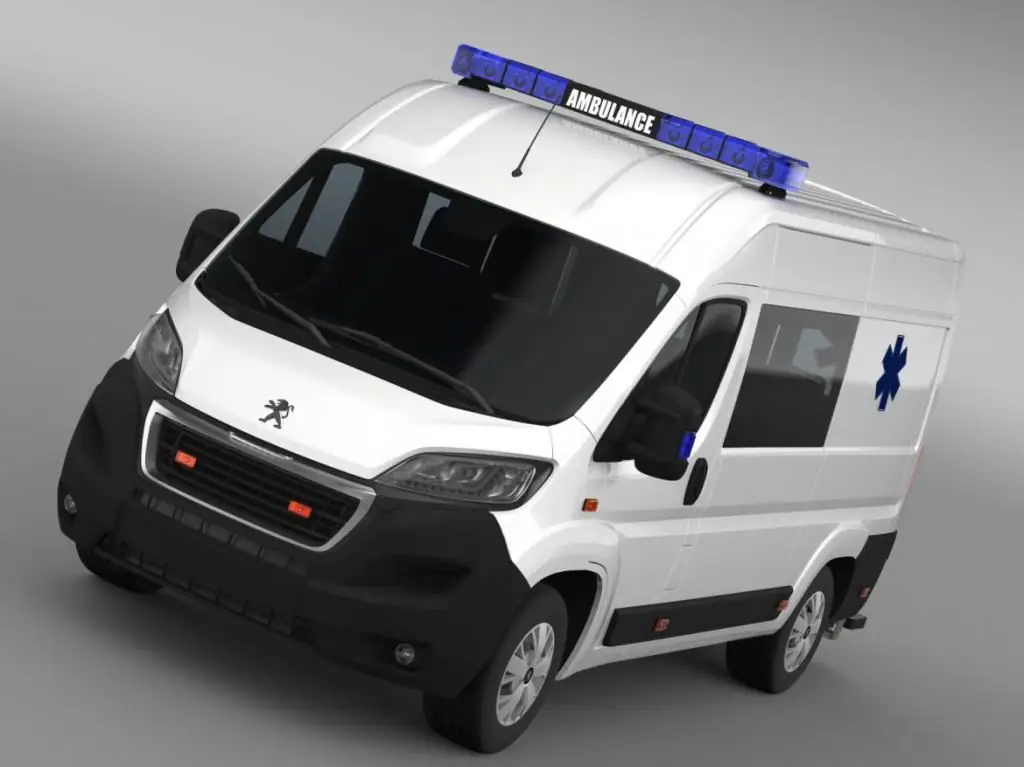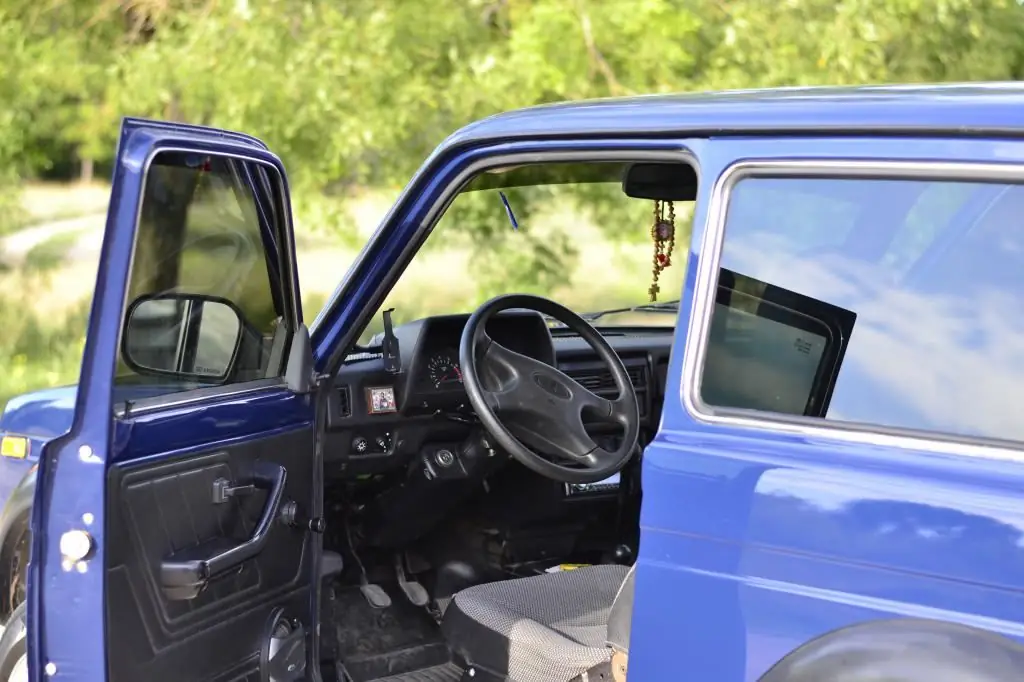2025 Author: Erin Ralphs | [email protected]. Last modified: 2025-01-22 21:14:11
Mitsubishi Pajero is one of the most famous Japanese large SUVs. The first generation of the Jeep began to be produced in 1982. The history of the Pajero 4th generation begins in 2006. Since 2011, the car has gone through three restyling. The Jeep was updated in 2011, 2014 and 2018. The car is produced in three-door and five-door versions. But, unfortunately, only a long five-door version is delivered to Russia, which is notable for its considerable size. "Mitsubishi Pajero 4" has almost 5 meters in length. This allows you to attribute it to heavy SUVs. The dimensions of the 4th generation Pajero speak of the executive class of the car, which, in addition to the five-seat version, also has a seven-seat modification.

Body
In the five-door version, the overall dimensions of the Pajero 4 are 4900 mm long, 1875 mm wide and 1870 mm high. Equality of width and height creates a classic silhouette of the body. With roof rails, the dimensions of the Mitsubishi Pajero 4 reach 1900 mm in height. The wheelbase is 2780 mm. Gross vehicle weight with maximum load reaches 2810 kg. The fourth "Pajero" still remains the master of off-road, even despite the rejection of a fully frame structure in favor of a combination of a spar frame and a load-bearing body. Against the background of classmates, the car body is particularly durable and resistant to corrosion. The trunk volume in a five-seater configuration reaches 663 liters. And with the second row of seats folded down, the car turns into a real van with a boot of 1790 liters.
The trunk lid can be opened both from the bottom up and to the side, depending on the requirements of the buyer. In the seven-seater version of the car, you can get to the third row of seats only through the trunk, or by folding the second row seats. The design of the fourth Pajero continues the tradition of classic Japanese SUVs. The large size of the Pajero 4, coupled with its angularity, creates the impression of brutality and reliability. This is emphasized by the massiveness of the decorative elements, as well as high ground clearance and large wheels. In this case, off-road qualities are priority, not design. However, restyling in 2018 somewhat smoothed out the roughness of the car's features. The grille has been redesigned and a silver trim has been added, which now descends to the very bottom of the front bumper. Instead of round fog lamps, LED running lights are now installed, complemented by small fog lights.

Salon
The interior of the fourth "Pajero" is strict and functional. There is a massivecenter console with an on-board computer installed in the middle. 12-speaker Rockford Fosgate audio system. Seats with advanced lateral support and optional electronic adjustment. The driver has the ability to adjust the seat height, which, coupled with convenient transmission control levers and an informative display, allows you to feel as comfortable as possible while driving. Four interior colors are available - black, grey, beige and brown.

Engine
The impressive weight and dimensions of the Pajero 4 require a powerful engine. These tasks are taken over by a reliable three-liter V6 with 4 valves per cylinder and an output of 174 horsepower. The maximum torque of the Japanese hard worker reaches 255 N•m. The high-torque motor allows you to take climbs up to 36 degrees and tow a trailer weighing up to 1800 kg. "Pajero" is able to overcome water obstacles up to 70 cm deep. It is important that the engine runs on affordable 92-m gasoline. This allows the SUV owner to be sure of the availability of fuel at any gas station and to be less dependent on the quality of the fuel. Despite the powerful engine and large size, the 4th generation Pajero consumes only 10.2 liters of fuel per 100 kilometers when driving on the highway.
Off-road performance
The Jeep's ground clearance is an impressive 22.5 centimeters. "Pajero" is equipped with a fully independent spring suspension. The suspension is well balanced, which allows it to easily “swallow” bumps and at the same timeprovide decent handling on the track. The Pajero is equipped with an advanced Super Select transmission. The SUV has 4 transmission modes:
- Rear-wheel drive for fuel economy on smooth roads.
- All-wheel drive for unpaved roads and difficult weather conditions.
- 4WD and locking center differential for serious off-road use.
- All-wheel drive, locking center differential and low gear for the toughest off-road areas where more traction is needed.

Pajero has won the legendary off-road Dakar Rally more than any other car, winning 12 times.
Conclusions
Amid the transformation of most large SUVs into large crossovers, the Pajero remains one of the few cars that, without falling into excessive utility, is still a real jeep, retaining the simplicity and off-road qualities of its predecessors. Against the background of competitors from Toyota or Land Rover, Pajero looks a little old-fashioned. But it is a reliable, comfortable and safe car. The absence of excess electronics and too bold technical solutions makes the car cheaper to operate and easier to repair. And this is exactly what is required from a classic SUV.
Recommended:
"Peugeot Boxer": dimensions, technical characteristics, declared power, maximum speed, operating features and owner reviews

Dimension "Peugeot-Boxer" and other technical characteristics. Car "Peugeot Boxer": body, modifications, power, speed, features of operation. Owner reviews about the passenger version of the car and other models
ZIL 131: weight, dimensions, dimensions, specifications, fuel consumption, operation and application features

ZIL 131 truck: weight, overall dimensions, operation features, photo. Specifications, load capacity, engine, cab, KUNG. What is the weight and dimensions of the ZIL 131 car? History of creation and manufacturer ZIL 131
Excavator EO-3323: specifications, dimensions, weight, dimensions, operation features and application in industry

Excavator EO-3323: description, features, specifications, dimensions, photos. Excavator design, device, dimensions, application. Operation of the EO-3323 excavator in industry: what you need to know? About everything - in the article
"Renault Duster". Dimensions, dimensions, technical parameters and development prospects

"Renault Duster", a compact crossover, was created in 2009 for the European market. The car was designed as an all-terrain vehicle based on the Japanese Nissan B0 platform, well known to Russians from the Logan, Sandero and Lada Largus models
Which "Niva" is better, long or short: dimensions, dimensions, specifications, comparison and the right choice

The car "Niva" for many people is considered the best "rogue". Off-road vehicle, at an affordable price, easy to repair. Now on the market you can find a long "Niva" or a short one, which is better, we'll figure it out

